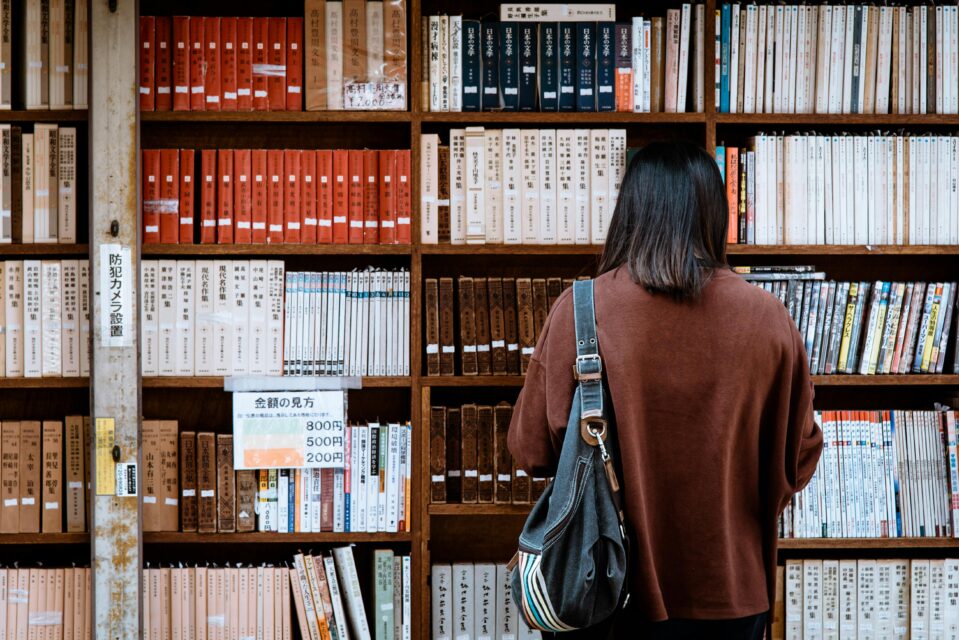Japan high school or “kōtōgakkō” (高等学校) or “kōkō” (高校) in Japanese, is a fundamental component of the country’s successful education. What factors govern secondary education in Japan—organizational structure, subjects taught, students’ daily lives, and the culture of the schools themselves?
The Structure of Japan High Schools
High school education system in Japan consists of an academic certificate, which is normally received after 3 years of study and is equivalent to grades 10, 11, and 12 of the international system of grades. It can therefore be said that although high school is not mandatory, near junior high school graduation, 98.8% of the youths transition to high school as per MEXT as of 2020.
Types of Japan High Schools

The high school system in Japan has many varieties, which enable the students to get the education of their choice depending on their potential and desire. This diversity is reflected in the four main types of high schools found across the country: such as public, private, national, and specialized high schools. All of them serve important purposes in defining the educational processes of the youths in Japan and add value to the scientific base and subsequent improvement of the system of secondary education in the country.
1. Government operated high school also known as municipal high school (公立高校, Kōritsu kōkō)
The Japanese high school system comprises primarily the public high schools referred to in Japanese as “Kōritsu kōkō.” There are more than 25,000 high schools in Japan, out of which 73% are managed by the local governments and prefectures. The schools are affordable compared to private schools, thus can easily attract many students, especially in the post secondary level. Entry to these schools is determined by the results of entrance tests, hence making it competitive to mirror Japan’s meritocracy in education-system beliefs. The curriculum of public high schools is mainly oriented towards passing examinations for university admission and the general learning is in conformity with the national curriculum.
2. Private high schools, also known as private senior high schools (privateness: 私立, schools: 高校, kōkō, seniority: 高等)
There are two types of high schools in Japan: privately funded high schools, also known as ‘Shiritsu kōkō, account for 26% of all high schools in the country and provide an option to the state-funded system. These are schools founded and managed by educational companies, and the schools usually cost more to attend. Still, they often provide one or more academic focuses, learning concepts, or association with a religious institution that may not be provided by public institutions. Private schools can therefore offer a more free-form approach to learning than public schools can manage. Several private high schools in Japan are old and famous and thus attract many students who want to gain admission into the best universities.
3. National High Schools or High Schools under the National government (国立高校, Kokuritsu kōkō)
National high schools, called Kokuritsu kōkō, comprise only about 1 percent of all high schools in Japan. These schools are centrally government-owned and are sometimes linked with the national university system. Their courses are generally regarded as possessing high academic character, and they make use of exclusive teaching methodologies. In many instances, they also act as laboratories for new education policies and strategies in Japan. These are schools and students attending them generally perform well academically, admission being by competitive examination. The curriculum in most national high schools is more developed than that offered in ordinary public, or even private, schools, with much focus placed on preparing the students for university education in the most prestigious institutions.
4. Specialized High Schools
Japan high schools also consist of multifaceted schools offering diverse specialized, academic and vocational focus. Technical high schools, called “Kōgyō kōkō”, provide courses in technologies and careers, mainly for manufacturing and engineering and Information Technology sectors. Nōgyō kōkō are agricultural high schools designed to provide theoretical and practical training for students who plan to become farmers or managers of farmland, livestock, and forests. Business courses (Shōgyō kōkō) are offered at commercial high school and prepare students for careers in business, trade and merchandising. These specialized high schools in Japan offer a large number of specialized courses important for creating skilled human talent in a variety of sectors of Japan’s economy.
Admission Process
The Japanese high school admission process therefore primarily relies on entrance exams that go by the name, nyūgaku shiken. Students usually study with concentration; intensive cramming is very common amongst learners and they often attend juku. The majority of public schools rely on exam results; some add junior high school performance. Recommendation based admission may be available in private schools. The specific request may be made by specialized schools. It’s known as exam hell (juken jigoku) . The process is essential culturally and has implications for future endeavors. The admission process presents Japan’s academic competitiveness and the importance of performance that characterizes society.
Curriculum in Japan High Schools
Japan high schools offer a comprehensive curriculum centered on five main subjects:
- Japanese: Concerns are targeting literature, both traditional and contemporary, Kanji learning, and writing.
- Mathematics: Advanced courses include algebra, geometry and calculus.
- Science: With Physics, Chemistry, Biology, and some schools offering Earth/Physical Science streams.
- Social Studies: Includes the History of Japan, the World, Spatial-Geographic, and Modern World.
- English: The curriculum concentrates on reading and grammar, with a gradual build-up of communications.
Other compulsory subjects are Physical and Health Education and any one from Fine Art or Music. Home Economics imparts skills one is likely to use in his/her day-to-day life. Almost all the schools today have incorporated Information Technology courses. It is to teach students the necessary knowledge for their further studying at universities during preparation for examinations and at the same time, it is important to bring up honest, responsible, and hard-working persons.
Like in other Asian countries, the Curriculum is provided by MEXT, but there is a certain degree of freedom for schools depending on their type and curriculum focus.
Daily Life in Japan High Schools
Japanese high school timetables suggest much time for any learning activity and contain a significant focus on discipline and homogeneity.
Typical Daily Schedule
- 7:30 AM–8:15 AM: Students come to school
- 8:30 AM: Morning assembly (朝礼, Chōrei)
- 8:45 AM – 3:30 PM: Classes (50-minute periods with short breaks)
- 3:45 PM – 6:00 PM (or later): Club activities
- Evening: Many students attend cram schools (塾, juku)
Unique Aspects of School Life
Japan high schools feature distinctive elements that shape student life:
- Cleaning time: It is a common practice that through the course of the day students have to partake in cleaning exercises to ensure that the class and other common areas are clean.
- School uniforms: Many of the schools’ students wear school uniforms; boys wear gakuran, while girls wear sailor outfits.
- School lunch: For some schools, lunch is prepared, while for others, students bring their own bento boxes that stress nutrition concepts and group dining.
- Homeroom: Students remain in one class, while teachers move from one class to another; this creates class unity and class responsibility.
Uniforms in Japan High Schools
Uniforms (制服, Seifuku) are distinctive aspects of high schools in Japan, and you can see that often, their design is based on military outfits and European-style Naval outfits.
Boys typically wear:
- Dark trousers
- White shirt
- Jacket with a stand-up collar (学ラン, Gakuran)
Girls often wear:
- Pleated skirt
- White blouse
- Sailor-style top (セーラー服, Sērā fuku)
Club Activities (部活動, Bukatsudō)
Extracurricular activities are a central part of student life in Japan high schools.
- Sports clubs: They played baseball, soccer games, tennis, volleyball, judo, and kendo.
- Cultural clubs: Sword dance, tea ceremony, writing, music
- Academic clubs: Science, Mathematics, Literature and Debate
A student spends 2-3 hours daily in club activities, excluding times like weekends and holidays.
The Path to University: Entrance Exams and Preparation
In Japan, the last year of high school is in essence devoted to taking university entrance examinations.
Elements of University Admission
- Center Test: A national test attended by majority of university entrants
- Individual University Exams: Extra tests which have been set by each and every university
- Recommendation-based Admissions: Some students get the chance due to their performance at high school level and their recommendations.
Preparation Methods
- Yobikō (予備校): Preparatory schools dedicated to preparing students for special entrance exams to universities
- Ronin (浪人): Those students who decide to have a gap year after they write their high school leaving certificate
- Mock Exams: Practice tests which help keep in touch with the student’s progress or his / her chances of getting into a university.
Difficulties Experienced in High Schools in Japan
While Japan high schools are renowned for their academic rigor, they face several contemporary challenges:
- Academic Pressure: Issues connected with student pressure and mental health resulting from exam-oriented education
- Bullying (いじめ, Ijime): A fairly common problem in schools, which can result in tragic outcomes.
- Demographic Changes: Small school populations that result to closures and merging of schools due to high costs and low birth rates
- Globalization: Lack of focus towards global skills and English language skills
- Technology Integration: Applying conventional concepts of teaching and learning alongside the use of technology
Conclusion
High schools in Japan provide an interesting insight of the historical as well as the contemporary form of education. Despite upholding high academic standards and cultural bearers, these institutions are also transforming with challenges of the 21st century in mind.
Education in a Japanese high school is akin to much more than simple education; it is a period that forms young people into disciplined citizens, interspersing their lives with friends they are likely to know throughout their lifetime, and sculpt them into responsible citizens of Japan.


